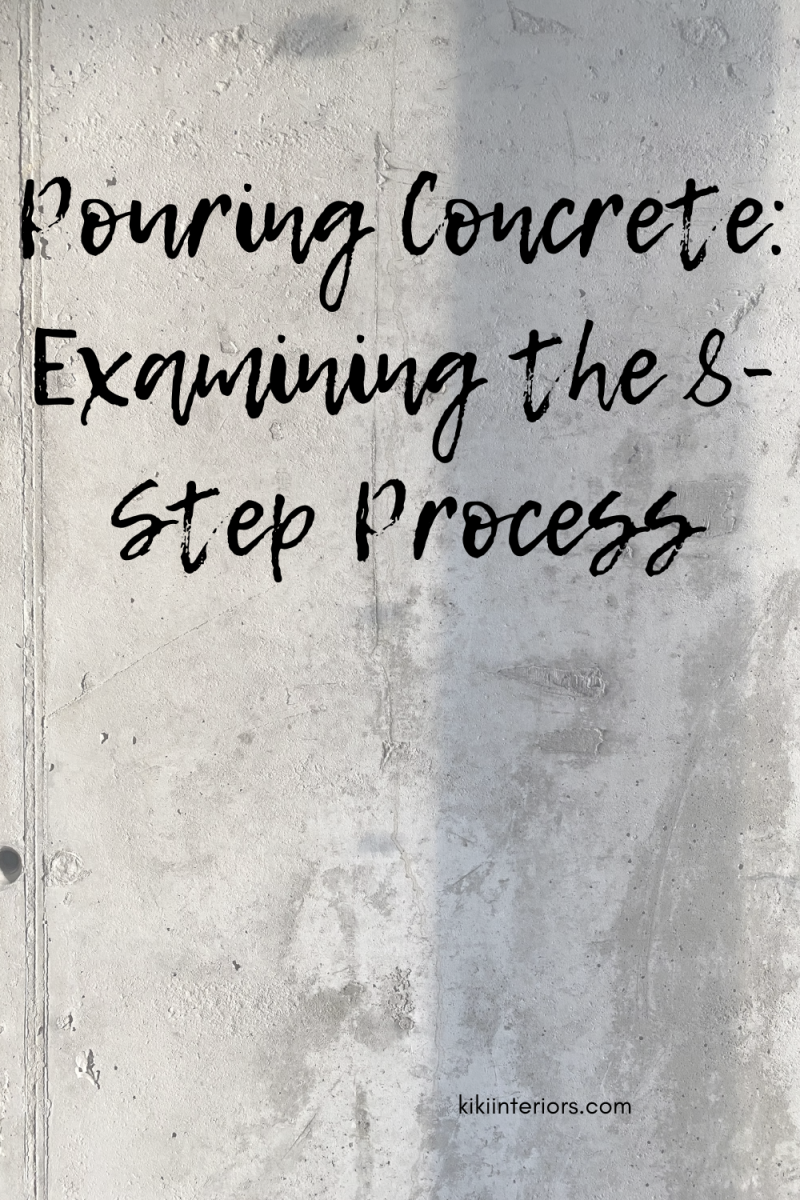
Pouring concrete is relatively easy. You can probably do it yourself for your home or business.
However, you must ensure you follow all the steps and don’t neglect any of them.
Poured concrete can last you a long time if you do the job correctly. Let’s run down the list of steps you’ll need to follow if you’re going to tackle this project.
Prep the Site
Site prep will come first. You should remove any shrubs, trees, rocks, grass, old pieces of broken concrete, etc. If you’re doing a large pour, you can use an earth mover for this. Otherwise, you can probably handle this by hand.

Set the Forms
Setting the forms for a residential pour is normally done with either wood or metal stakes. You can attach forms to the stakes you put down with either special nails intended for the purpose or screws.
Mix the Concrete
Next, you’ll want to mix your concrete. The mixture should have water added to it according to the instructions on the bag. You will require a concrete mixer for larger projects. For small residential ones, you can get by with a shovel and wheelbarrow.
Place the Concrete
You will next pour your wet concrete into the forms you have laid out for the occasion. Make sure you fill each form up to its top edge. After you’ve poured out the wet concrete, use shovels or rakes to smooth it out so that there are no air pockets.
Do Your Early Finishing
Early finishing should come next. Use a flat wooden board or piece of metal designed for the purpose of screeding the top of the poured wet concrete. You need to do this so that any low or high areas are smoothed out. Large bull floats work best for broader areas, but you can utilize small hand-held floats for any detail work or edges.

Trowel Work
If you want the finished product to appear smooth, use a steel trowel at this point in the process. You can use the method called skating to guide your steel trowel along the surface of the hardening concrete. You can trowel small areas one at a time this way, or you might also trowel larger areas with a long pole called a fresno.
Do Your Final Finishing
After you are all done with your troweling, you must do your final finishing. This involves what those in the construction industry call a “broom finish.”
You can get a special broom designed for the purpose and sweep it along the drying concrete to create a rough texture. There are other types of finishes as well, so you might want to read up on those to see if you would prefer a different kind, like stamped, for example.
Let It Cure
Letting the dry concrete cure comes last. The process can last a full four weeks, but the first 48 hours are the most vital. You will want to apply a liquid chemical curing compound during this time.



